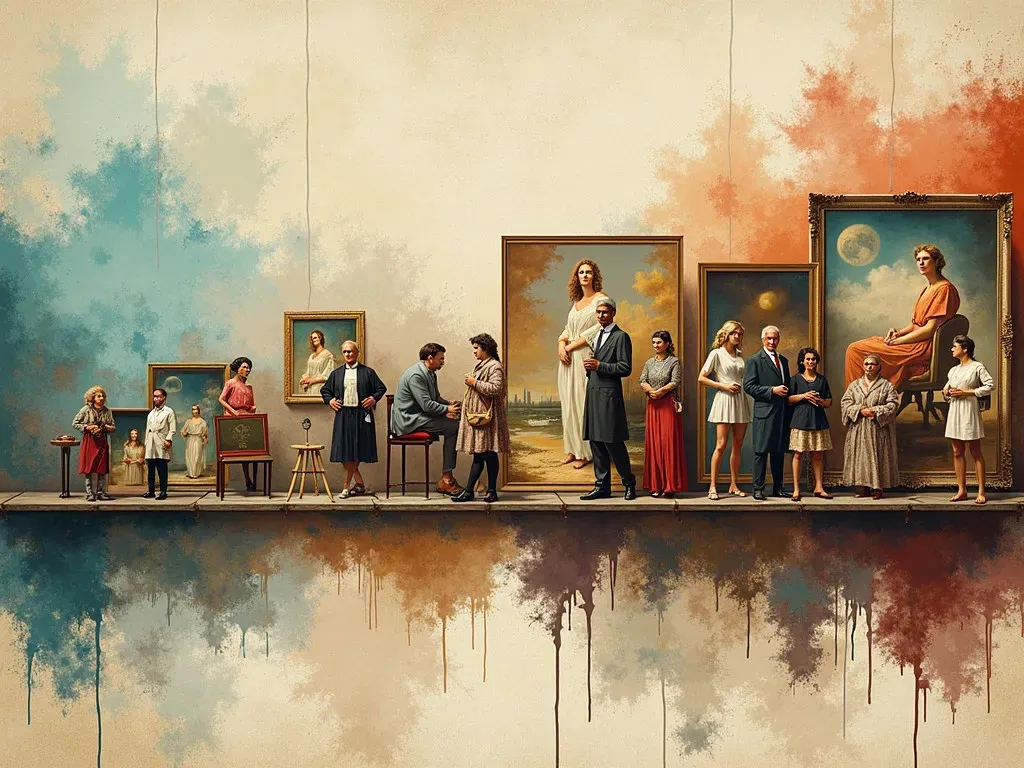The phrase "best painter in the world" evokes a myriad of thoughts and interpretations, often leading to a debate among art enthusiasts regarding who truly deserves this title. While numerous artists have left their indelible marks on the canvas of history, certain figures consistently rise to the top of this list. Let’s explore who these extraordinary talents are, their iconic works, their influence on modern art, and the legacy they leave behind.
Defining the Best Painter in the World
When discussing the best painter in the world, we must reflect on both historical and contemporary artists. The term encompasses a diverse range of styles, Techniques, and cultural backgrounds. From the expressive brushstrokes of Van Gogh to the profound symbolism in Kahlo’s works, the best painter embodies a unique vision that resonates with audiences across generations.
Notable Candidates for the Title
- Leonardo da Vinci (1452-1519): An emblem of intellect during the Renaissance, da Vinci’s paintings, such as the Mona Lisa and The Last Supper, showcase his mastery of light and shadow.
- Vincent Van Gogh (1853-1890): Known for his emotive use of color and dynamic compositions, his works, including Starry Night, continue to inspire artists and viewers alike.
- Pablo Picasso (1881-1973): The pioneer of Cubism, Picasso’s ability to deconstruct form and explore dimensions in art revolutionized modern painting.
- Frida Kahlo (1907-1954): Celebrated for her deeply personal and emotive self-portraits, Kahlo challenged societal norms and explored themes of identity and suffering.
- claude monet (1840-1926): A leading figure in Impressionism, Monet’s atmospheric landscapes capture the essence of light and nature, epitomizing fleeting moments.
These artists, among many others, have been pivotal in shaping our understanding of art. Acknowledging their contributions allows us to appreciate the complexity of artistic genius.
Comparative Table of Iconic Painters
| Painter | Lifespan | Notable Works | Style |
|---|---|---|---|
| Leonardo da Vinci | 1452-1519 | Mona Lisa, The Last Supper | Renaissance |
| Vincent Van Gogh | 1853-1890 | Starry Night, Sunflowers | Post-Impressionism |
| Pablo Picasso | 1881-1973 | Guernica, Les Demoiselles d’Avignon | Cubism |
| Frida Kahlo | 1907-1954 | The Two Fridas, Self-Portrait with Thorn Necklace | Symbolism |
| Claude Monet | 1840-1926 | Water Lilies, Impression, Sunrise | Impressionism |
Impact on the Art World
Each of these artists has contributed significantly to the evolution of painting. Their works challenge perceptions, evoke emotions, and question the boundaries of artistic expression. For example, Picasso’s Cubism paved the way for abstract art, while Van Gogh’s swirling brushstrokes have influenced countless artists across movements.
Recognizing Semi-Famous Artists
While the spotlight often shines on the most prominent figures, a wealth of semi-famous artists also adds depth to the art world. These artists, whose names may not be as universally recognized, still produce works that are powerful and resonant.
- Gustav Klimt: Known for The Kiss, Klimt’s ornate designs and use of gold leaf exhibit a unique aesthetic.
- Georgia O’Keeffe: Often considered the "Mother of American modernism," her iconic floral and desert paintings evoke a deep connection with nature.
These artists remind us that the world of painting is vast and varied, allowing for diverse interpretations and styles.
Frequently Asked Questions (FAQs)
Who is considered the best painter of all time?
Determining the best painter is highly subjective and varies based on personal tastes. However, many art historians point to Leonardo da Vinci and Vincent Van Gogh as top contenders due to their immense impact on art history.
What makes a painter "the best"?
A painter may be regarded as the best based on their technical skill, innovative techniques, emotional depth, and lasting influence on the art world. Their ability to connect with audiences across generations is also a key factor.
Are there modern painters who can be considered for this title?
Yes, contemporary artists like Banksy have received widespread acclaim for their unique contributions to the art world. Their innovative approaches challenge traditional norms and engage with current social issues.
What defines a great painting?
A great painting often combines technical mastery with emotional resonance, creativity, and a distinct viewpoint that invites the viewer to contemplate its meaning.
How do I learn more about famous painters?
To delve further into the lives and works of legendary painters, you can visit My Modern Met for in-depth articles that highlight their contributions and legacies.
Exploring Art Movements
Understanding the best painter in the world requires a journey through various art movements that have shaped painting practices. Each style carries its signature characteristics and foundational principles.
Major Art Movements in History
- Renaissance (14th-17th century): A revival of classical learning, emphasizing humanism and realistic perspectives.
- Baroque (17th century): Characterized by dramatic use of color and light, baroque paintings often depict grandeur and emotion.
- Impressionism (19th century): Focused on depicting light and its changing qualities, artists like Monet aimed to capture a moment in time.
- Cubism (20th century): Initiated by Picasso, it emphasizes abstract form and multiple viewpoints, breaking away from traditional perspectives.
- Abstract Expressionism (mid-20th century): This movement foregrounds spontaneity and individual expression, as seen in the works of Jackson Pollock.
If you’re keen on exploring the full spectrum of painting’s evolution, each of these movements offers a unique lens through which we can understand the best painter in the world.
By considering the contributions of both legendary and semi-famous artists, we can gain a deeper appreciation for the art of painting and the cultural narratives interwoven within it. As the world of art continues to evolve, so too will the titles and honors afforded to its most celebrated figures.
